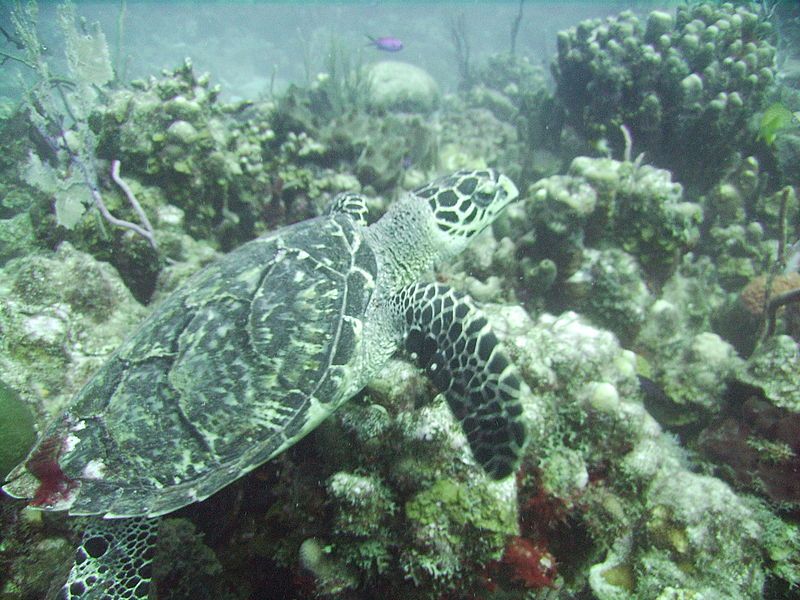Endangered Hawksbill Turtles Living in Mangroves
A scientific team following the critically endangered Hawksbill Turtle has found living in mangroves. It is thought that the turtles have adapted to their loss of typical coral reef habitats by using the mangroves instead.

A scientific team following the critically endangered Hawksbill Turtle has found living in mangroves. It is thought that the turtles have adapted to their loss of typical coral reef habitats by using the mangroves instead. Mangroves are currently threatened themselves as these coastal tree and shrub habitats are removed for a variety of purposes.
Mangroves grow in saline coastal areas and protect the land from wave action as well as being a biodiversity hotspot with many threatened making their homes there. However, approximately 35% of mangrove area was lost during the last several decades of the twentieth century.
Mangroves are important coastal defenses as well, protecting the land behind from tsunamis and mitigating some sea level rise. There are already calls to protect the remaining Mangroves, with this latest news further evidence of the need for strong measures to ensure this amazing habitat continues.
The turtles have been decreasing in numbers dramatically over the past century, with some estimates put at 80% losses in the last 3 generations. This has been attributed to hunting, accidental catches by fishermen, loss of nesting grounds, predation by rodents and their long life spans / slow gestation and generational turnover.
Now that scientists and conservationists know where to look it is hoped that they might be better able to protect the creatures from further decline and extinction.
